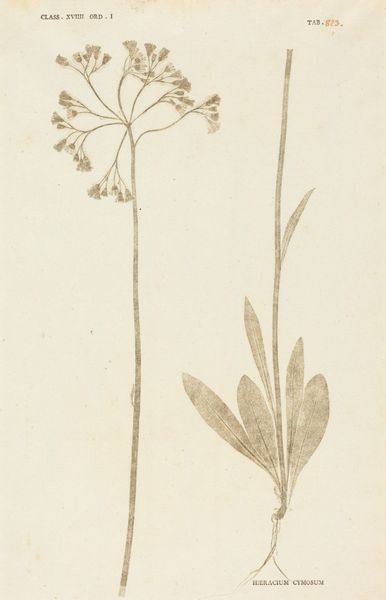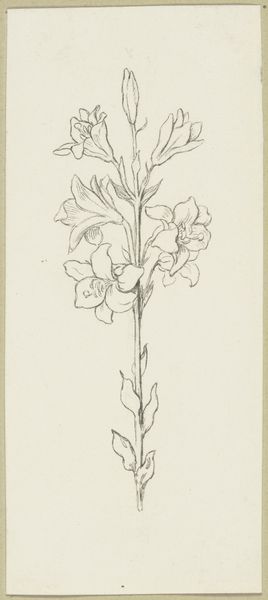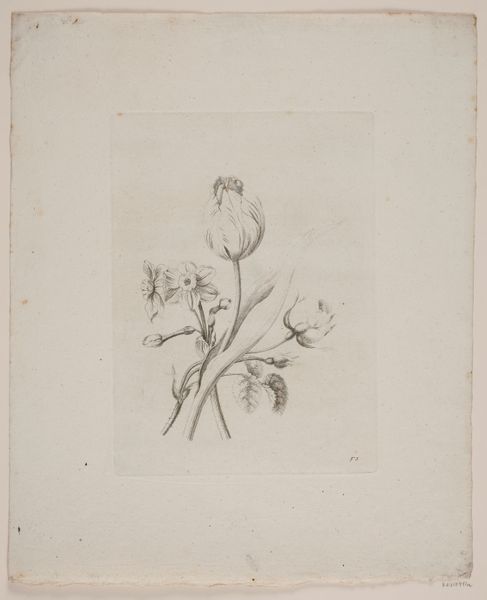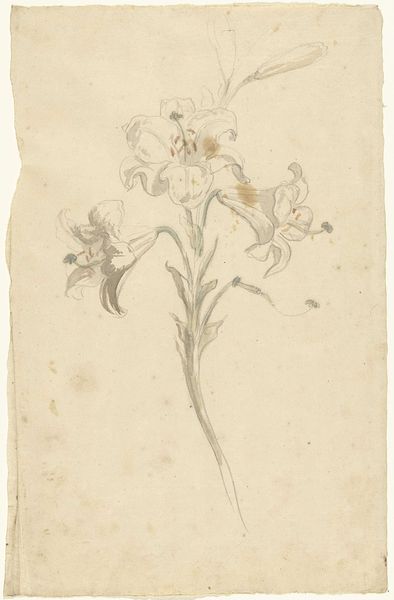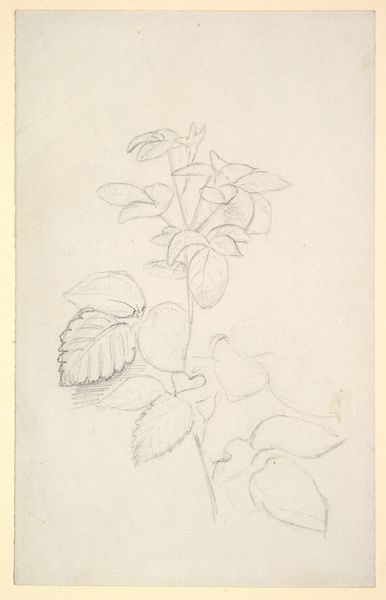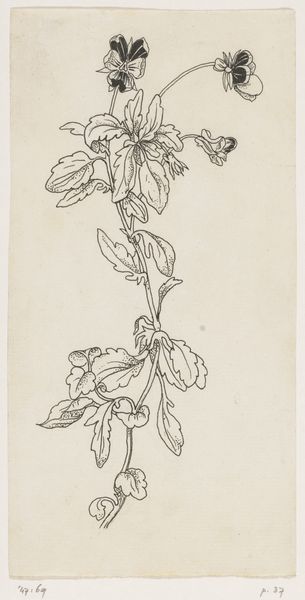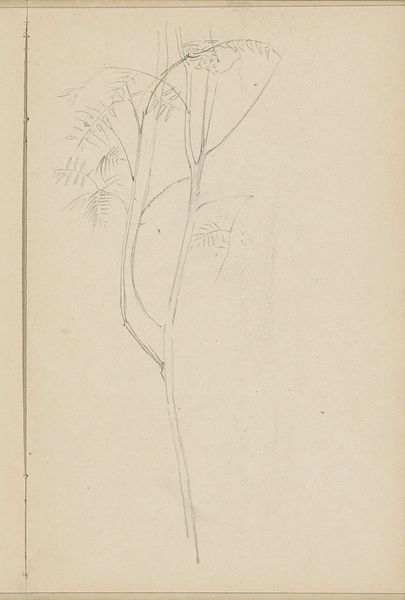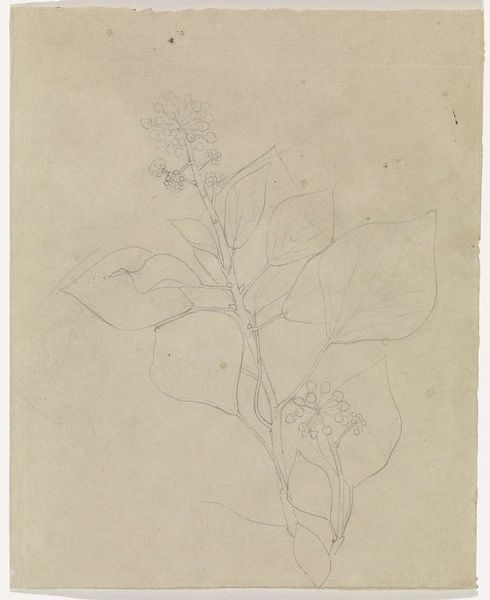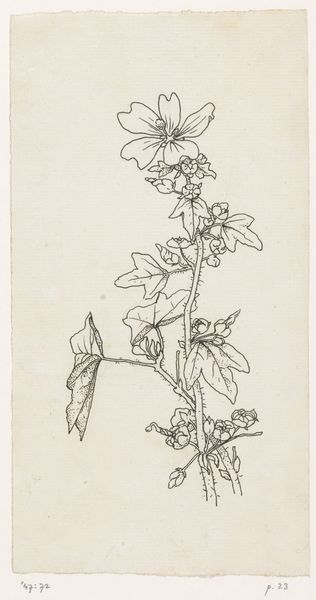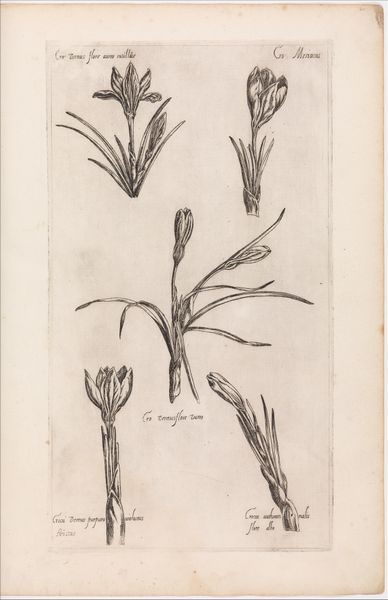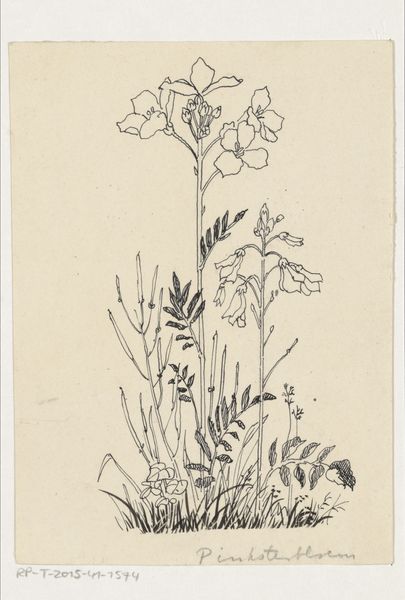
drawing, ink
#
drawing
#
organic
#
landscape
#
etching
#
form
#
ink
#
romanticism
#
line
Copyright: Public Domain
Curator: Here we have "Iris," a delicate drawing created in 1808 by Philipp Otto Runge. It’s currently housed at the Städel Museum. What’s your first impression? Editor: A feeling of fragility, certainly. It’s quite sparse, just lines of ink really, yet it captures the essence of the iris beautifully. I also notice a hint of another drawing underneath, very faint. It gives it a sense of time, almost like a palimpsest. Curator: Exactly. Runge was a key figure in German Romanticism, and this drawing really showcases the period's interest in close observation of nature. He aimed to reveal the inherent spiritual meaning through natural forms, a common thread amongst Romantic artists. The visible, preliminary sketch reveals his working process, quite intimate, really. Editor: And irises themselves carry such rich symbolism, don’t they? Often linked to royalty, wisdom, and faith. This image encourages contemplation. How does its simplicity speak to Romantic ideals for you? Curator: For Runge and his contemporaries, representing nature faithfully involved going beyond the mere physical appearance. They sought to capture the emotion and deeper truths that nature evokes in us. The Romantic artists actively cultivated an idealized landscape to support a renewed sense of cultural-historical awareness. Editor: I find the form compelling. It feels both delicate and strong. The artist’s focus seems intent on understanding the very structure of the plant. Also the Romantic period can be perceived as both progressive and regressive as artists used it as a form of commentary to what was happening in the world at the time. Curator: Indeed. Runge’s study offers a fascinating insight into the artistic and intellectual currents of his time. Editor: Yes, it gives me a better understanding not only of the artist himself, but of the world he was living in, particularly within the burgeoning culture of science, philosophy and Romanticism at that time. The delicacy and strength intertwine here.
Comments
No comments
Be the first to comment and join the conversation on the ultimate creative platform.
